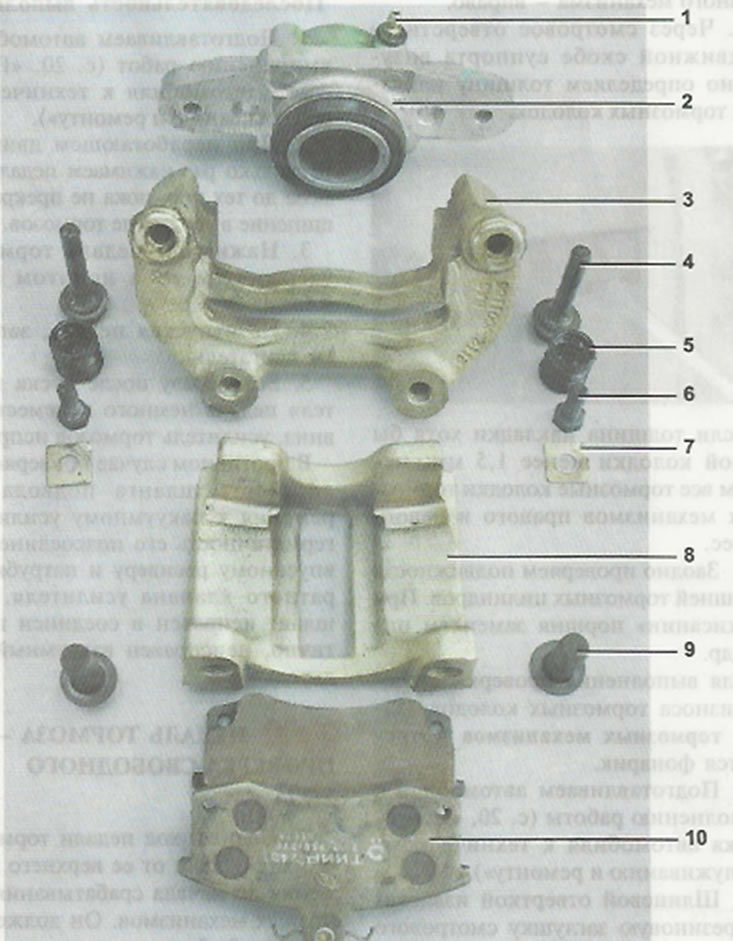
Details of the front brake caliper: 1 - bleed valve; 2 - working cylinder; 3 - fixed caliper bracket; 4 guide pin of the movable bracket; 5 - protective cover of the guide pin; 6 - guide pin bolt; 7 - locking plate; 8 - movable caliper bracket; 9 - a bolt of fastening of the working cylinder to a mobile bracket; 10 - brake pads.
To complete the work you will need:
- reliable support under the car;
- small metal brush
Removing
1. We prepare the car for work («Preparing the car for maintenance and repair»).
2. Remove the front wheels («Wheel - replacement»).
3. We clean the reservoir of the main brake cylinder from dirt. We remove the lid of the tank.
4. We clean the brake mechanism from dirt.
5. Through the inspection hole in the floating bracket of the caliper, we slightly push the brake pads so that they move away from the brake disc to the maximum possible distance.
6. Using a slotted screwdriver, bend the corner of the lock plate of the lower guide pin bolt.
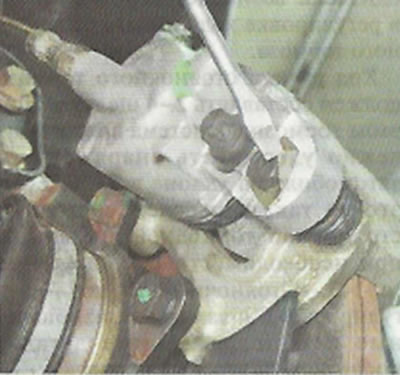
7. Remove the brake hose from the rack bracket («Front brake hose - replacement»).
8. Holding the guide finger from rotation with a 17 mm open-end wrench, unscrew its bolt with a 13 mm wrench.
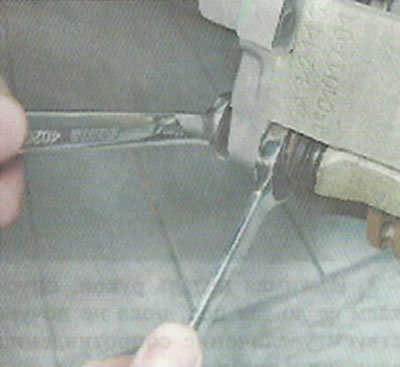
9. Raise the movable bracket up by turning it on the upper guide pin.
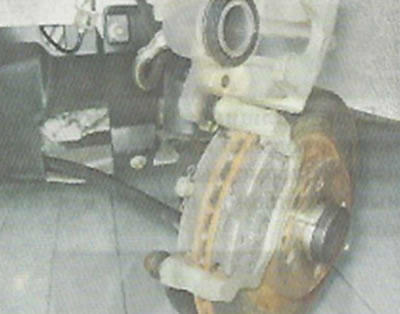
10. Remove the brake pads.
11. With a small metal brush, we clean the seats of the pads from dirt and rust.
12. We make sure that there is no leakage of brake fluid from under the cuff of the brake cylinder.
Installation
1. Install new brake pads in place.
2. We lower the movable bracket down until the hole in the housing is aligned with the hole in the guide pin (when lowering the bracket, make sure that the spring antennae of the pads do not stand up and do not bend).
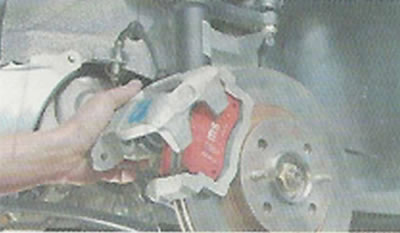
3. We wrap and tighten the bolt of the guide pin.
4. We fix the bolt from turning away with the corner of the locking plate.
5. Install the brake hose in the suspension strut bracket.
6. Similarly, we change the brake pads of the brake mechanism of the other front wheel.
7. Press the brake pedal several times to self-adjust the gaps between the pads and brake discs.
8. We check the level of brake fluid in the reservoir of the main brake cylinder and, if necessary, bring it to normal.
If the fluid level in the brake master cylinder reservoir is above the MAX mark, use a rubber bulb to remove some of the fluid from the reservoir.
Warning! After replacing the brake pads in the first 100-200 km, the braking performance will be reduced. Be careful.
